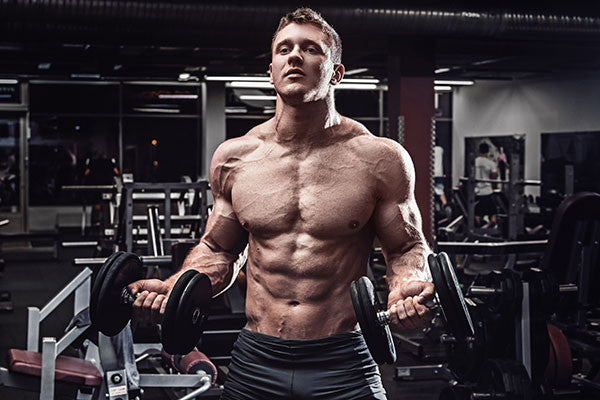
Back in the day, back in the day. Everything was so great back in the day. Ask anyone over the age of 30 about how things used to be, and you'll inevitably be slammed with tales of how great things used to be. Maybe things were more simple then. Or, maybe the passage of time just removes some of the shade, leaving us with a filtered, positively-etched version of how things were. Regardless, the memory of past years and events is usually way rosier than anything we're facing today. And while the selective memory is likely imaginary in terms of most events, there is one arena where things have certainly gotten worse, no matter how long you've been training - the speed in which you make biceps & triceps muscle gains.
When you first started training, anything worked. You could literally walk into a gym and fiddle with some weights on the way to the water fountain, and you'd discover a new quarter-inch of thickness on your upper arms when you woke up the next day, after a night of drinking and fast food binging Today? These days you train with high intensity, pre-exhaust biceps and triceps attack, slug down shakes and steaks, and still struggle to put on an 1/8 of an inch every month. Yes, when it comes to making fast gains, in relation to the efforts you display in the gym, "the good old days" were certainly that.
The longer you train, the slower you'll see gains. As the months and years of training pass, you have to become more deliberate, focused, and precise in your training, supplementation, recovery and diet, in order to maximize your results and see any growth at all. The closer you move to your ceiling, the fewer results you see. Therefore, as you reach intermediate and advanced status, you have to do everything right, and really think strategically in terms of how you will train in order to see sustained gains. Let's look at a few ways you can do this in terms of biceps and triceps training.

Lessen your range of motion
For most exercises, we are taught to embrace the full range of motion. In other words, we strive to move the weight as far up, and as far down, as is humanly possible. We have been taught this because, as we all know, partial repetitions don't build up the entire muscle. However, this isn't entirely true. There is a point where going TOO FAR can lead to the targeted muscle group, whether it is biceps or triceps, being pulled OUT of position, as the shoulders or forearms take over the lift. You should only be moving the weight until you reach the peak point of the targeted muscle group - then return to starting position.

Don't skimp on forearms
Many lifters devote precise attention to biceps and triceps with deliberate mass building and isolation movements. Then, they completely neglect their forearms. One would think that a muscle group which is visible in every pose and nearly 1/3 of the entire arm would receive at least a little bit of attention. The typical mindset usually reverts to one of two excuses… either they don't want to make their biceps look too small, or they figure the forearms receive enough overlap training from other training. Do a google image search on "Phil Heath Forearms" then revisit your position. Target the forearms with 4 sets of overhand grip training, and four sets of wrist curls each week.

Keep your back stationary
Whatever weight you've been using for standing barbell biceps curls, there is a good chance you've been using about 20% too much. Whip out your cell phone and record some video the next time arm day rolls around. Look at the position of your body as you knock out your heavy curls. Is your back straight, keeping upright as the curls are completed? Or are you letting it bend, allowing you to move a little more weight, while at the same time taking the tension away from your biceps and transferring it to your hip and back? Lower your weight, move through your reps in a slow and deliberate manner, and the results will be outstanding!

Begin heavy on the triceps
Without a doubt, your gym is packed with attractive options for hitting your triceps. Cables and machines and all sorts of stations which allow you to hit the tris from more angles than you can imagine. Your best advice would be to walk right past them. Don't fall into the trap of "pumping" your upper arms before you've put in some meat and potatoes training. Always start your triceps workouts with at least 3 exercises, 4 sets each, using free weights. This can include triceps kickbacks, skullcrushers, or any other movement you enjoy. Don't forget the job of close-grip bench presses as well! Using these heavy compound movements will stimulate actual muscle growth. You can always limp over to the pumping stations afterwards, and enjoy the feeling of the burn as you etch detail into those arms. However, your best gains will arrive after you have thoroughly scorched those arms into submission… and heavy free weights are the way to do it!
Eat. More.
While this isn't specifically training, there is certainly a correlation between how much food you eat, and how intensely you can train. The more carbs you intake (assuming they are clean sources such as beans, pasta, rice and vegetables), the more energy you will have for long training sessions! Additionally, there is a chance you aren't eating enough food now, meaning you're functioning at a caloric deficit. You cannot gain new muscle if you're burning more calories than you're taking in. Add a steak and a potato to your daily diet, and see if you don't notice a bump in your results!


